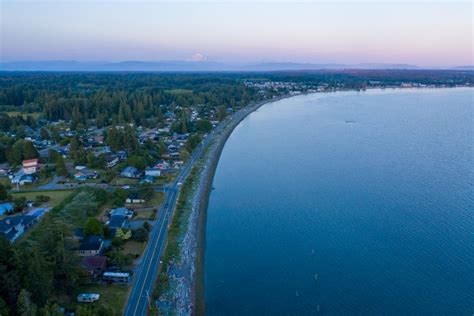United States Map 1850

The year 1850 was a pivotal moment in the history of the United States, marked by significant territorial expansion, political tensions, and demographic changes. The U.S. map of 1850 reflects the country's rapid growth and the complexities of its development during this period. To understand the map of 1850, it's essential to consider the historical context that led to the formation of the United States as it was known at that time.
Following the Louisiana Purchase of 1803, the United States had doubled in size, acquiring a vast territory west of the Mississippi River. The subsequent years saw further expansion, including the Adams-Onís Treaty of 1819, which established the border between the U.S. and Spanish Florida, and the Mexican-American War (1846-1848), resulting in the U.S. gaining control of a significant amount of land from Mexico, including present-day California, Nevada, Utah, Arizona, New Mexico, Texas, and parts of Colorado, Kansas, Oklahoma, and Wyoming. The Treaty of Guadalupe Hidalgo, which ended the war, had a profound impact on the map, as it led to the Mexican Cession, a vast area of land that would eventually become parts of several U.S. states.
Key Territorial Changes and Events

The U.S. map in 1850 showed 30 states, with Wisconsin being the most recent addition in 1848. The territories not yet admitted as states included the Utah Territory, the New Mexico Territory, the Oregon Territory, and the Minnesota Territory, among others. The year 1850 was also significant for the passage of the Compromise of 1850, a set of laws aimed at addressing the issue of slavery in the territories, which further complicated the political landscape and had implications for the map's future changes.
Slavery and the Compromise of 1850
The issue of slavery was a contentious one, with the Compromise of 1850 attempting to balance the power between slave and free states. The compromise admitted California as a free state, strengthened the Fugitive Slave Act, and banned the slave trade in Washington, D.C., but allowed Utah and New Mexico to decide on slavery for themselves, potentially leading to more slave states. This compromise had significant implications for the future of the United States and its territories, as it heightened tensions leading up to the Civil War.
| State/Territory | Status in 1850 |
|---|---|
| California | Admitted as the 31st state on September 9, 1850 |
| Utah Territory | Established in 1850 from parts of the Mexican Cession |
| New Mexico Territory | Established in 1850 from parts of the Mexican Cession |
| Minnesota Territory | Established in 1849 |
| Oregon Territory | Established in 1848 |

Geographical Features and Exploration

The U.S. map of 1850 also reflects the geographical features and explorations of the time. The Great Plains, the Rocky Mountains, and the vast deserts of the Southwest were areas of significant interest for explorers, settlers, and the government. The construction of the Oregon Trail, which began in the 1840s, facilitated westward expansion, while the California Gold Rush of 1849 drew thousands of people to the West Coast in search of gold, leading to rapid population growth and further territorial development.
Transportation and Infrastructure
The development of transportation infrastructure, including roads, canals, and especially railroads, played a crucial role in the expansion and settlement of the United States. The year 1850 saw significant advancements in railroad technology and construction, with the Baltimore and Ohio Railroad being one of the first major railroads, connecting the East Coast with the Ohio River. These advancements facilitated travel, trade, and communication across the vast territories, further integrating the country and setting the stage for future growth.
Key Points
- The U.S. map in 1850 consisted of 30 states, with significant territorial areas not yet admitted as states.
- The Compromise of 1850 attempted to balance the issue of slavery, leading to California's admission as a free state and allowing Utah and New Mexico to decide on slavery.
- The Mexican Cession and the Treaty of Guadalupe Hidalgo significantly expanded U.S. territory, setting the stage for future state admissions.
- Geographical features and exploration, including the Great Plains and the California Gold Rush, drew settlers and spurred development.
- Advancements in transportation infrastructure, particularly railroads, facilitated westward expansion and integration of the country.
In conclusion, the United States map of 1850 reflects a period of significant expansion, political compromise, and geographical exploration. The events and developments of this year had profound implications for the future of the country, setting the stage for the challenges and opportunities of the late 19th and early 20th centuries. Understanding the complexities of this period is crucial for grasping the evolution of the United States into the country it is today.
What significant event in 1848 contributed to the U.S. map changes in 1850?
+The Mexican-American War ended with the Treaty of Guadalupe Hidalgo in 1848, leading to the Mexican Cession and significantly expanding U.S. territory.
How did the Compromise of 1850 affect the issue of slavery?
+The Compromise of 1850 attempted to balance the power between slave and free states by admitting California as a free state and allowing Utah and New Mexico to decide on slavery, while strengthening the Fugitive Slave Act.
What was the impact of the California Gold Rush on the U.S. map in 1850?
+The California Gold Rush drew thousands of people to the West Coast, leading to rapid population growth and further territorial development, contributing to California’s admission as the 31st state in 1850.



